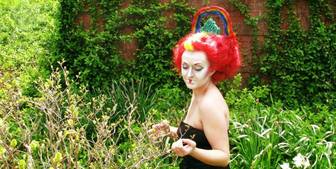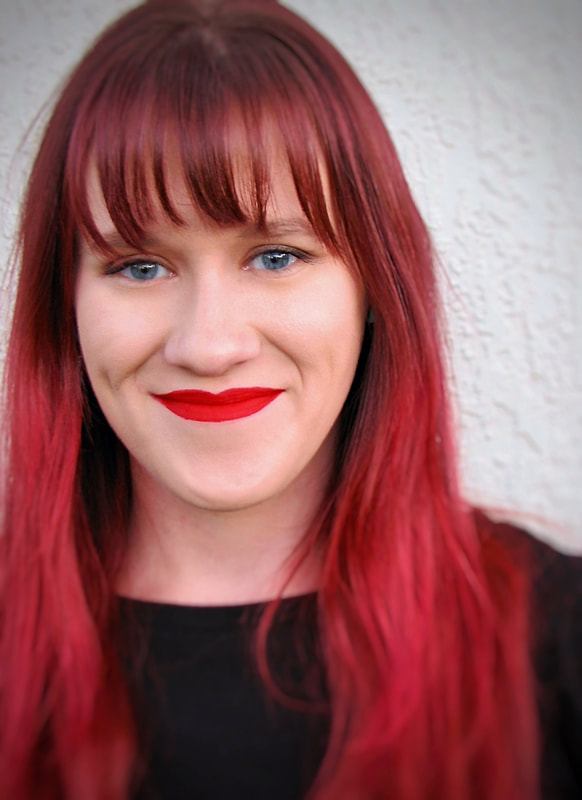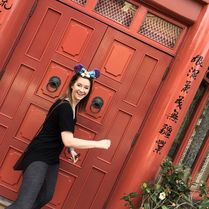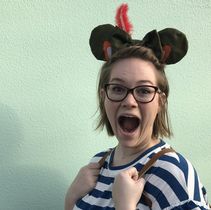My first question to Kim was how she went about choosing how to host her “side hustle”. Having the right host for you is very important. It needs to be easy for you to change, customize, and get foot traffic. A “side hustle” is your side business. If you are putting more time into it than your main career/job, it is no longer a “side hustle”. Kim told me she chose Etsy for a few reasons. Etsy has its own search engine optimization (SEO) making your items easier to find. They show up more often in searches in turn bringing more people to your site. There are other sites like Weebly, Wix, etc. that allow for shops to be attached, but those require a different understanding of SEO and search terms. Kim felt Etsy was easier for her because of this. She also picked Etsy for their shipping ease and user friendly amenities that aligned with how she wanted to run her “side hustle”. After picking a good host for her side business, I asked Kim to give some tips on how to make sure your “side hustle” remains just that , yet how to make sure it makes a profit. Kim was very quick to say research. Research is important as a costume designer and as a “side hustler”. It is important to research your demographic, your product, your host, etc. Know what kind of cut your host will take from your sales, know what others making similar products to you are charging, etc. The next tip is to have a community. Having someone to bounce ideas off of or to ask questions when you hit a problem is very helpful. As I talked about in a previous blog (here) it is important to have Facebook groups, chat groups, friends, etc. to talk through things with. Kim keeps organized to streamline her business. Her specific products can be prepped easily so they are ready to customize and finish when they are ordered by her customers. Finding moments when she has free time Kim preps her supplies just like a prep cook in a restaurant. Having things organized and ready to go keeps the time needed to do things for the “side hustle” to a minimum. Also having a specific area of your living space designated to your business is important to keeping thing organized. Being a business you would buy from is also important. Kim sets her customer service high as well as her diversity and inclusive advertising. If you want to buy from the company, most likely others will also buy from you. Kim’s business is all about her customers. She customizes her products for each order. Working with the creativity of her customers excited Kim. It also excites her customers. Many other stores make products and sell them as is. Kim prefers to have starting points for her customers to build from. Kim also uses models of different sizes and skin tones. She admits she needs continue to expand her inclusiveness of models but strives to make her products non-binary and friendly to all who wish to purchase them. “I like buying things from places like Unique Vintage and Modcloth who have more inclusive models and products. I want my business to reflect that.” Overall Kim says find something that makes you happy and you may be doing even if you weren’t paid for it. She started making ears for Disney Bounding (dressing to suggest a Disney character using modern fashion) just for herself and friends. People would come up to her in the parks asking where she got them and if they could buy them. This sparked the idea that she could make money from something she was doing anyway. It was great to get some insight into a “side hustle” from a fellow costume designer. Kim’s biggest tip is to find a “side hustle” that you love to do and can make a little cash from and treat your customers well. “There will be people making what you are making. Find a way to stand out.”
1 Comment
If you want to see some of Zachary's work you can visit his site: zacharymbrienza.com A colleague of mine recently commented on how she believed theatre makeup was becoming obsolete and that more "street" or everyday makeup brands were being used in the place of classic theatre brands such as Ben Nye and Krylon. This piqued my interest. I did some research including getting ahold of a makeup artist and wig designer friend of mine Melissa Thiede.  Photo courtesy of Melissa Thiede Photo courtesy of Melissa Thiede I had noticed a large array of makeup at different theatres I have worked at. Most still used traditional oil based or water based stage paints, but recently I had noticed such companies as MAC and Cover Girl sneaking into different artists' makeup bags. Was this becoming a trend? I asked Melissa for a professional's opinion. Bakewell: "Have you noticed a transition in theatre makeup away from "stage" makeups towards "street" makeups like MAC? If so why do you think that is?" Thiede: " I have heard that there has been changes that have occurred industry. I've only been doing makeup for about four years. I haven't seen any major transitions. Lots of new techniques. This always makes my job exciting. From what I heard from other artists, characters' makeup looks have become more blended and less bold shapes. The makeup can more easily translate from stage to close up." Bakewell: "Could you give me an example of one of the techniques that has changed since you've started makeup?" Thiede: "One technique that has really changed is blocking out your eyebrows. I was first taught to use nose and scar wax. Even then, my teacher said it wasn't something used much anymore. It can fall apart very easily when an actor moves their brows. Now, I don't really know any artist that uses it. I was taught by another teacher to use soap or a glue stick to block out eyebrows. This technique appears more natural on an actor's face. Their eyebrow hair easily stays up and out of the way." Bakewell: "What is the difference between stage and street makeups in application?" Thiede: "Corrective stage makeup and everyday makeup is similar. You have to highlight and contour just in different ways. My favorite type of makeup to apply is big transformations. For example, an actor into a monster or creature of some sort. " So based on the questions I've asked Melissa and some industry research, it looks as if there may be a slight transition to more everyday brands of makeup. The old severe contouring and highlighting of the Vaudeville days may be on it's way out. This is understandable since many theatres are become more intimate and actors sometimes physically interact with their audiences. Many performances are also being taped, broadcasted, or shown in movie theatres. Stage makeup is not easily photographed since it is meant to be seen from a distance; not up close. I don't think I'll throw away my current stage makeup kit and run out to buy all new "street" palettes, eyeliners, and shadows, but it is nice to know I have that option.
|
Topics
All
Archives
July 2021
|




